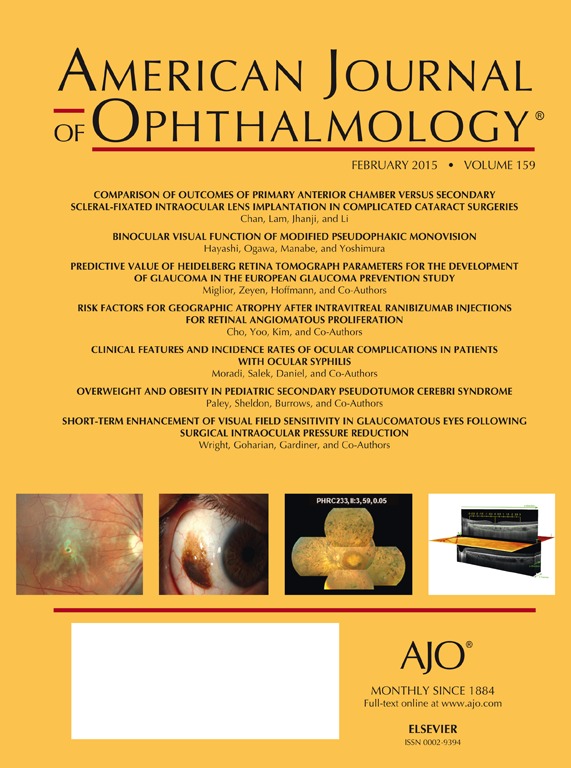La RAP rappresenta una peculiare forma di maculopatia essudativa, che ha, tra le altre, la caratteristica di interessare bilateralmente il paziente. In genere si ottiene una buona risposta alla terapia con iniezioni intravitreali di anti-VEGF ma la pratica clinica indica che vi è la frequente tendenza alla recidiva, con la necessità di ripetere a lungo le iniezioni.
In questo studio coreano si valuta l’incidenza degli esiti in atrofia del trattamento della RAP mediante iniezioni con Lucentis (Ranizumab). A distanza di 2 anni, con una media di 7,5 iniezioni per paziente, si è avita atrofia nel 37% dei casi. L’analisi statistica del campione ha identificato, come fattori predisponenti a tale esito, lo spessore coroideale subfoveale, la presenza di pseudodrusen reticolari e la presenza di atrofia nell’altro occhio.
Han Joo Cho, Seul Gi Yoo, Hyoung Seok Kim, Jae Hui Kim, Chul Gu Kim, Tae Gon Lee, Jong Woo Kim
Department of Ophthalmology, Kim’s Eye Hospital, Myung-Gok Eye Research Institute, Konyang University College of Medicine, Seoul, South Korea
American Journal of Ophthalmology
February 2015 Volume 159, Issue 2, Pages 285–292.e1
Methods Forty-three eyes (38 South Korean patients) from patients being treated for naïve RAP with intravitreal ranibizumab injection were included in this study. All patients were treated with an initial series of 3 monthly loading injections, followed by further injections as required. Baseline ocular characteristics and lesion features assessed using fluorescein angiography (FA), indocyanine angiography (ICGA), and spectral-domain optical coherence tomography (SD OCT) were evaluated as potential risk factors for GA through 2 years of follow-up.
Results At 2 years follow-up, GA had developed in 16 of 43 eyes (37.2%). The mean number of ranibizumab injections was 7.52 ± 2.11. Using multiple logistic regression, thinning of the subfoveal choroid at baseline (odds ratio [OR], 0.955; 95% confidence interval [CI], 0.929-0.982; P = .002), presence of reticular pseudodrusen (OR, 1.092; 95% CI, 1.017-1.485; P = .039), and presence of GA in the fellow eye at baseline (OR, 1.433; 95% CI, 1.061-1.935; P = .025) were identified as significant risk factors for GA development.
Conclusions GA developed in 37.2% of eyes with RAP during the 24 months following intravitreal ranibizumab injections. Subfoveal choroidal thinning at baseline, the presence of reticular pseudodrusen, and the presence of GA in the fellow eye at baseline were associated with increased risk of GA development after treatment.

 Risk Factors for Geographic Atrophy After Intravitreal Ranibizumab Injections for Retinal Angiomatous Proliferation
Risk Factors for Geographic Atrophy After Intravitreal Ranibizumab Injections for Retinal Angiomatous Proliferation